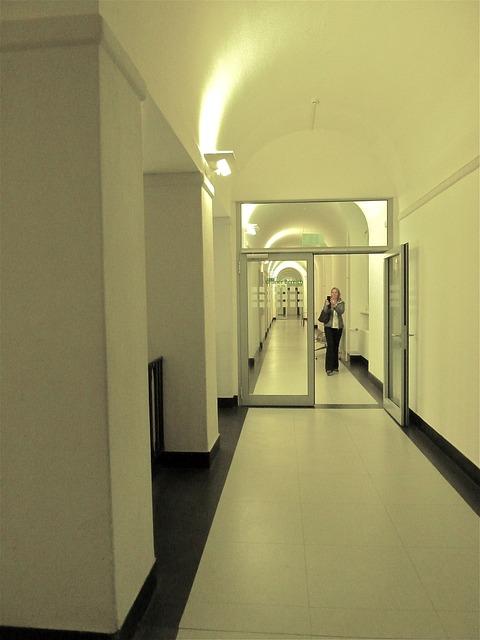Introduction:
In the vibrant tapestry of Pakistan’s societal landscape, public policy stands as a crucial thread that weaves together the aspirations of its diverse populace. Yet, the journey toward effective governance is often fraught with challenges that can seem insurmountable. As the nation grapples with multifaceted issues—from economic instability to social inequities—the need for innovative solutions in public policy becomes ever more pressing. This article delves into the intricacies of Pakistan’s public policy framework, exploring the obstacles that hinder progress and highlighting potential pathways for transformation. By examining the interplay between political dynamics, civic engagement, and administrative efficiency, we aim to illuminate the vital role of responsive governance in fostering a resilient and equitable Pakistan. Join us as we navigate through the complexities of enhancing public policy and uncover the solutions that could lead the way toward a brighter future for all.
Fostering Inclusive Governance for Sustainable Development
Inclusive governance is pivotal for addressing the myriad challenges facing public policy in Pakistan. To cultivate a climate where every citizen feels represented, it is essential to engage a wide array of stakeholders in decision-making processes. The implementation of strategies such as community consultations, local forums, and multi-stakeholder partnerships can greatly enhance the responsiveness of governance to community needs. Furthermore, leveraging technology such as e-governance platforms can facilitate transparency, enabling citizens to access information and contribute to discussions that shape public policy effectively.
Additionally, a robust framework for inclusivity must address structural barriers that hinder marginalized groups from participating in governance. Prioritizing the voices of women, minorities, and the economically disadvantaged can lead to more equitable development outcomes. To bolster this paradigm shift, it is critical to implement capacity-building programs that equip citizens with the necessary skills to engage in policy dialogues. This proactive approach can be illustrated through a simple framework:
| Inclusion Strategy | Expected Outcome |
|---|---|
| Stakeholder Engagement Workshops | Enhanced community representation |
| Digital Literacy Programs | Increased participation in e-governance |
| Legislative Advocacy Initiatives | Stronger legal frameworks for marginalized groups |

Addressing Bureaucratic Inefficiencies Through Technological Integration
In the modern landscape of governance, technological advancements present an unprecedented opportunity to combat bureaucratic inefficiencies that have long plagued public policy execution in Pakistan. By adopting systems such as cloud computing, data analytics, and mobile applications, governmental bodies can streamline processes, enhance inter-departmental collaboration, and improve decision-making efficiency. Digital platforms can facilitate quicker approval processes and reduce the layers of red tape, ensuring that services are delivered to citizens in a timely manner. Key initiatives to consider include:
- Digital Public Services: Implementing online portals for citizen services to reduce waiting times.
- Data-Driven Decision Making: Utilizing big data to inform policy adjustments and resource allocation.
- Training and Capacity Building: Equipping public servants with tools and skills for effective technology use.
However, the successful integration of technology into bureaucratic frameworks necessitates overcoming several barriers, including resistance to change and lack of infrastructure. A commitment to institutional reform is crucial as is fostering a culture of innovation among public sector employees. Collaborative efforts between public agencies and private tech firms can bridge existing gaps and drive technological adoption. For instance, a pilot program could be initiated to evaluate the effectiveness of these technological solutions before wider implementation. The benefits of such initiatives can be visualized through the following table, which highlights potential improvements:
| Current Process | Proposed Technology | Expected Outcome |
|---|---|---|
| Manual Document Handling | Cloud-Based Solutions | Faster Processing Times |
| In-Person Service Access | Online Service Portals | Improved Accessibility |
| Slow Feedback Loops | Automated Surveys and Analytics | Enhanced Responsiveness |

Engaging Civil Society: Strengthening Policy Feedback Mechanisms
To strengthen public policy in Pakistan, it is vital to foster robust channels for feedback from civil society. This engagement can take many forms, such as community forums, online surveys, and stakeholder workshops, ensuring that diverse voices contribute to the policymaking process. By actively involving citizens, policymakers can gather real-time insights and concerns that reflect the needs of various demographics, making policies more relevant and effective. Key strategies for enhancing this engagement include:
- Leveraging Technology: Utilize digital platforms for wider outreach and participation.
- Building Trust: Establish transparent communication to encourage open discourse.
- Capacity Building: Provide training for civil society organizations to articulate their views effectively.
Moreover, creating structured feedback loops can significantly improve the responsiveness of government actions. Implementing a regular schedule for public consultations, allowing communities to discuss the impact of current policies, can bridge the gap between governmental intentions and public expectations. Consideration should be given to setting up local councils where representatives can relay community feedback directly to policymakers. The table below illustrates potential feedback mechanisms and their characteristics:
| Feedback Mechanism | Description | Expected Outcome |
|---|---|---|
| Public Forums | Meetings to discuss policies with community members. | Increased community engagement. |
| Online Surveys | Digital questionnaires to collect diverse opinions. | Broad participation. |
| Stakeholder Workshops | Collaborative sessions to develop policy proposals. | Innovative solutions. |

Promoting Economic Resilience: Strategies for Policy Innovation
To foster an environment conducive to economic stability, a reevaluation of existing frameworks is crucial. Policy innovation can serve as a catalyst for enhancing economic resilience by embracing technology and encouraging public-private partnerships. Key strategies could include:
- Investment in Smart Infrastructure: Upgrading physical and digital infrastructure to improve connectivity and efficiency.
- Support for Entrepreneurship: Creating incubators and providing access to funding for startups and small businesses.
- Enhancement of Human Capital: Focusing on education and vocational training to equip the workforce with in-demand skills.
Moreover, incorporating a data-driven approach in policymaking can significantly improve outcomes. Utilizing technology to collect and analyze economic data allows for agile responses to emerging challenges. Consider implementing actionable metrics to quantify success in various sectors. The following table illustrates viable indicators:
| Indicator | Description |
|---|---|
| GDP Growth Rate | Measures economic performance over time. |
| Unemployment Rate | Indicates the percentage of the labor force that is unemployed. |
| Export Diversification | Assesses the variety of goods and services exported. |
In Conclusion
As we navigate through the intricate landscape of public policy in Pakistan, it becomes clear that the journey toward effective governance is both challenging and essential. The obstacles we face are multifaceted, rooted in historical contexts, socio-economic disparities, and institutional inefficiencies. Yet, within these challenges lie the seeds of potential and opportunity.
The solutions highlighted in this discourse reflect a collective vision—one where collaboration, transparency, and innovation are not mere aspirations, but actionable goals that can reshape the future of public policy. By fostering dialogue among stakeholders, investing in capacity-building, and prioritizing inclusivity, Pakistan can chart a new course that not only addresses current needs but anticipates the aspirations of future generations.
the path to enhancing public policy is not a solitary one. It calls upon the collective wisdom and will of all segments of society—government, civil organizations, and citizens alike—to come together. As we embrace the complexities of change, let us remain committed to a resilient, adaptive approach that will ultimately pave the way for sustainable development and improved quality of life for all Pakistanis. The potential for transformation is in our hands; it is time to seize it.



